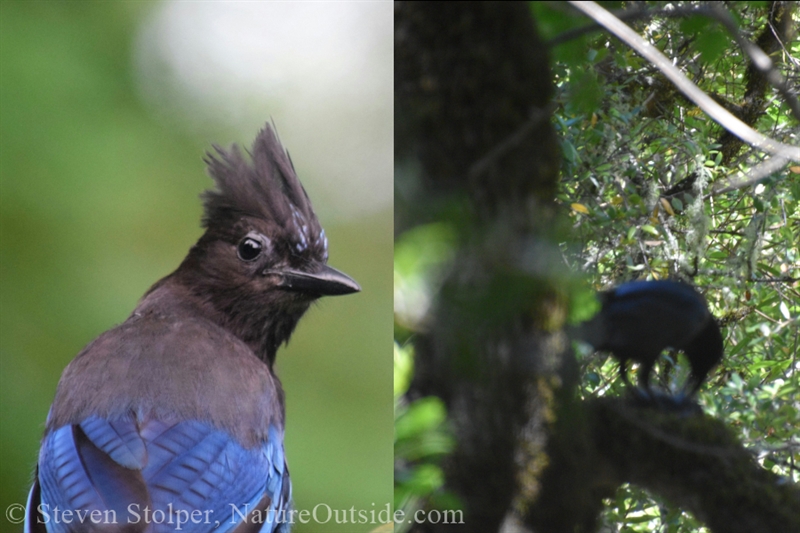
Photo of Steller’s Jay by j. a. uppendahl on Unsplash, photo of Raven by Steven Stolper
It’s an early June morning and I’m strolling down a forest path. The sweet fragrance of California Bay Laurel is already wafting through the trees. It promises to be a warm day, but it’s still cool and I enjoy the gentle breeze on my face.
I take great comfort in this particular woodland. It’s my medicine without side-effects. I come here to escape the daily bustle that life insists is important, but deep down we all know better.
What is Baseline?
As I descend a dirt path, the ground falls away beside me. It creates a shallow ravine filled with Douglass Fir, Tanoak, and Bay Laurel. Looking down, I cannot make out its floor. But I know from experience that a seasonal creek flows through the duff far below me.
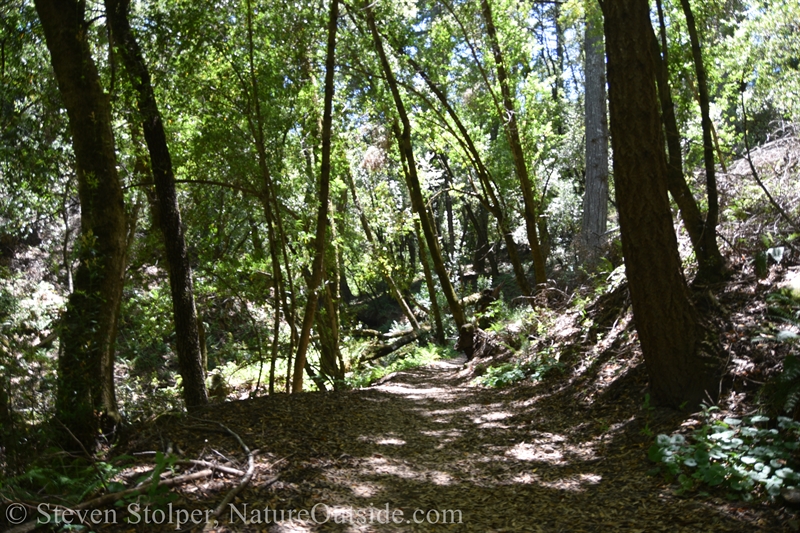
Looking behind me, I see the ravine begin to form at the left of this picture.
Overhead, California Sister (Adelpha bredowii) butterflies play amongst the oaks.
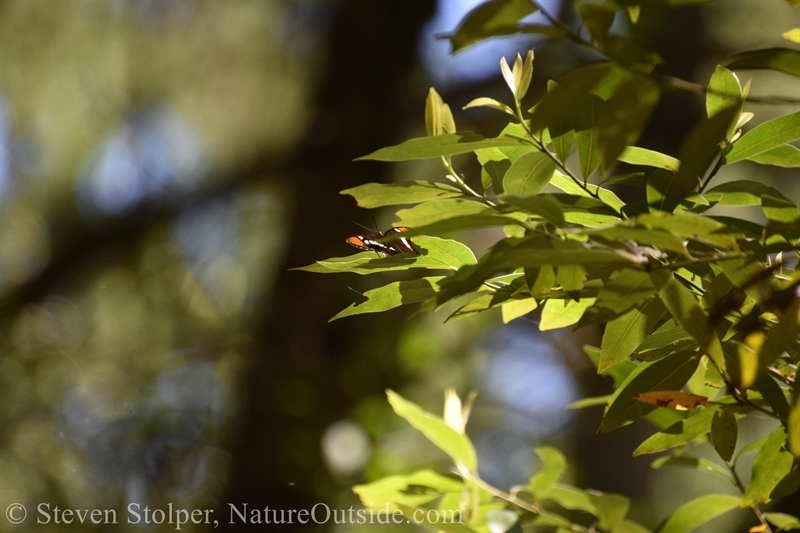
California Sister butterfly
The forest is at “baseline.” Baseline is a term used by animal trackers to describe when animals act as if you are not there. They go about their daily lives and are not disturbed by your presence. Trackers aspire to move through the forest making as little disturbance as possible, to keep the forest at baseline. A forest at baseline allows us to observe animals exhibiting their natural behaviors.
And when a forest changes from baseline, it is often a clue that a predator is moving about. Nature is constantly reaching out to us, speaking to us, we just need to listen. And detecting when a forest changes from baseline is an important skill. It not only allows you to detect “drama” in the forest, but helps to minimize the impact of your own movements.
Listen and You Will Hear
I have written before about learning bird language. Birds are the eyes and ears of the forest. They see everything… and they gossip! If you can tune into the birds, and listen to what the squirrels have to say, you can often detect unseen animals lurking nearby.
So, when two Steller’s Jays (Cyanocitta stelleri) begin to alarm in the ravine, it catches my attention. I stare downward hoping to catch a glimpse of a predator moving along the bottom of the ravine. But the tree cover is too thick. The most I will be able to catch is a quick glimpse where the foliage has gaps.
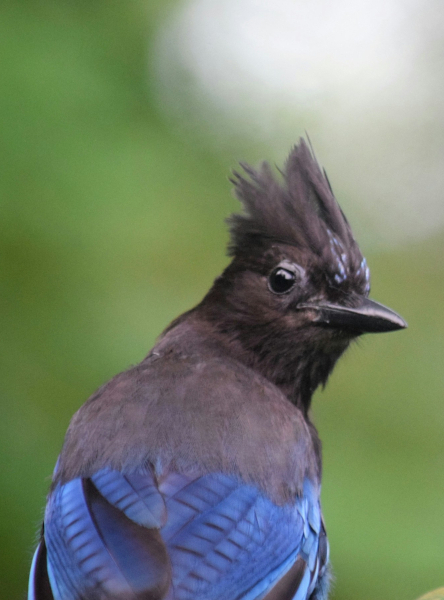
Steller’s Jay, Photo of Steller’s Jay by j. a. uppendahl on Unsplash
I spend about two minutes looking. And far from abating, the Steller’s Jays scream with an anger and desperation I’ve never heard before.
Here is what a scolding Jay sounds like. Multiply this sound 100 times, and it will approximate what I heard.
I am ready to give up. But the calls are so desperate, I decide to stay for another minute. I must have stood there, straining my senses, for five minutes before I suddenly see a movement in the trees. I had been staring so intently at the ground that I missed a tragedy playing out in the branches in front of me.
It wis the time of year nestlings are beginning to fledge. And a Raven (Corvus corax) has attacked one of the jay’s fledglings. The helpless parents can only watch and scream in vein.
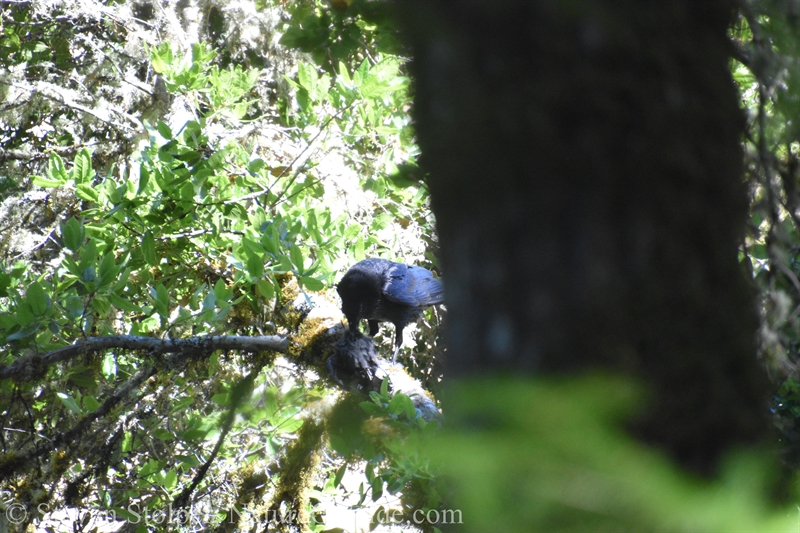
Raven eating fledgling
The Raven carries the body to another tree, possibly to avoid attack from the parents. There it continues its meal.
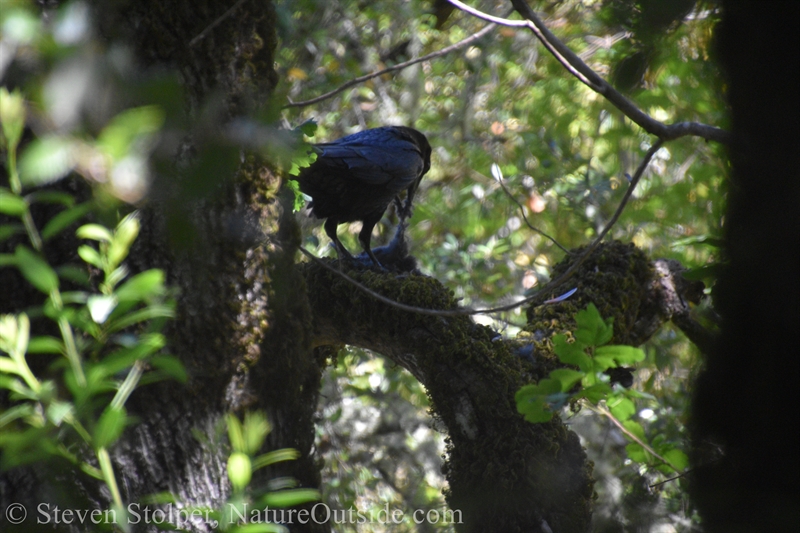
Raven eating the Steller’s Jay fledgling
And I got to watch the entire drama play out because I was attuned to the birds around me.
Listen and You Won’t Hear
They say that “silence speaks as loud as words.” And if you’re attuned to the birds you can learn to read this silence and recognize danger.
Later in the hike, I came upon two birds near the trail: A Dark Eyed Junco (Junco hyemalis) and a California Quail (Callipepla californica). They alarm to warn their friends of my presence, as I expect. But then, they immediately fall silent. The silence is eerie. They should have continued to squawk. I stop on the trail to look at them. Certainly they consider me a threat.
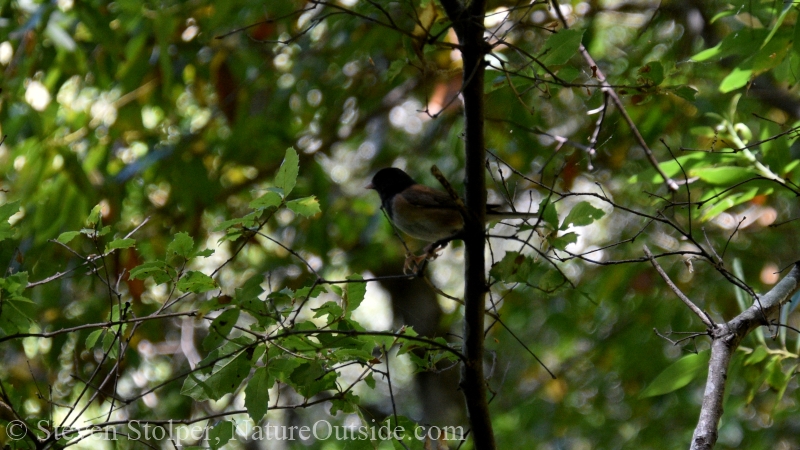
This Junco should be on the ground, feeding. Instead, it is in a tree. Why isn’t it warning about me?
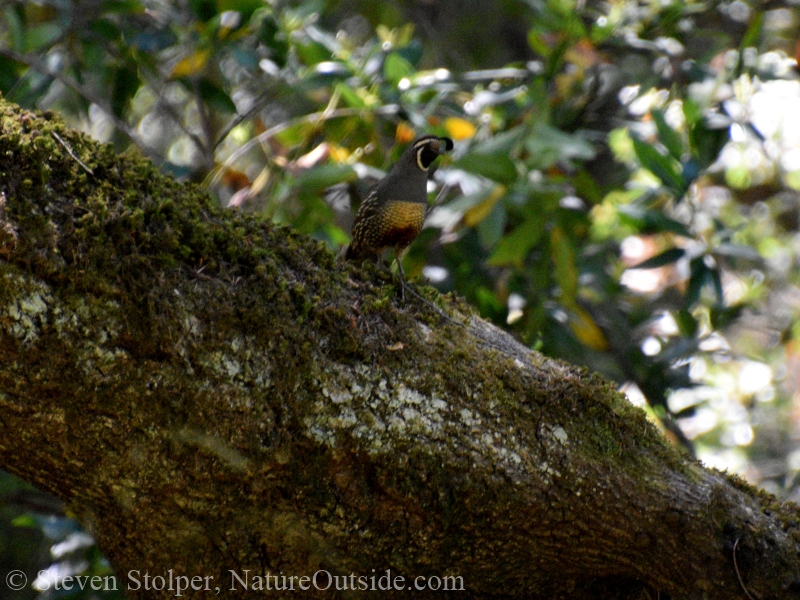
This California Quail knows I’m there, but is not calling a warning.
When birds become silent, I look to the skies. And I’m rewarded with the sight of a Red-tailed hawk (Buteo jamaicensis) soaring through the trees. This hawk is hunting. And although it primarily hunts rodents and reptiles, the ground-feeding birds surrounding me consider it a threat.
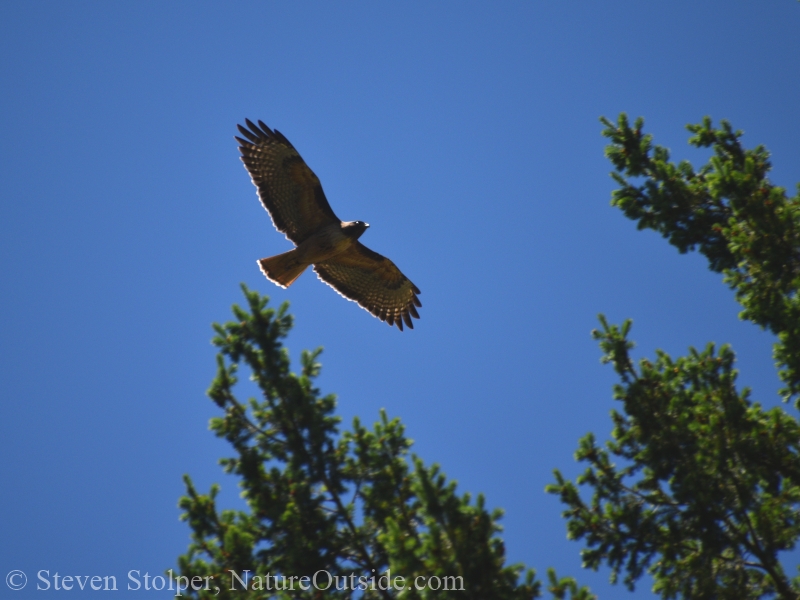
This Red-tailed hawk is hunting and the birds surrounding me go silent. They consider it a threat.
The birds remain motionless as the hawk passes overhead. And then we all resume our journeys.
Related Articles on NatureOutside
To See More Wildlife, Learn Bird Language
It’s Enormous and it’s Coming Toward You! How to interpret Squirrel Alarm Calls (Audio)
Listen to the 5 Voices of Birds (Video)
For fun facts and useful tips, join the free Bushcraft Newsletter.



Leave a Comment